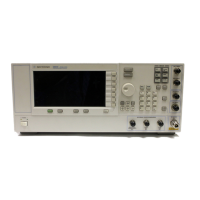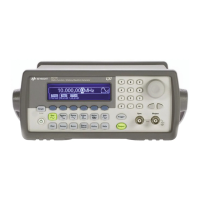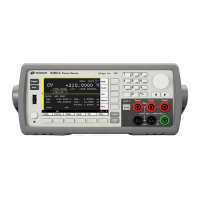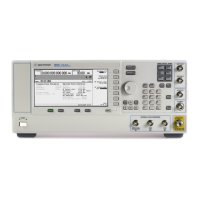E8257D/67D, E8663D PSG Signal Generators Service Guide 165
Troubleshooting
RF Path Description (Frequency Generation, Level Control, and Modulation)
has a frequency range of 200 to 400 MHz. A 10 MHz reference signal from the
A7 Reference (or an external 10 MHz reference) can be used to phase–lock the
sample clock signal of the DACs.
The Burst Pulse signal from the A14 Baseband Generator goes to the A11
Pulse/Analog Modulation Generator, and is used to drive the pulse modulators
on the A8 Output and A30 Modulation Filter. The Burst Pulse signal is used by
the digital modulation formats to synchronize the main RF path and ensure
maximum on/off level ratio.
The I and Q output signals are the primary signals out of the A14 Baseband
Generator. They are the digital modulation signals that go to the A13 I/Q
Multiplexer, and are then routed to the I/Q modulators on the A8 Output and
A35 I/Q Modulator.
Approximate Device Gains and Losses
You can troubleshoot assemblies in the RF path by measuring gains and losses
and comparing them to Table 1-28, below. See “Troubleshooting RF Power
Levels” on page 122 for more information.
Table 1-28 Approximate Device Gains and Losses
Item # Device Gain/Loss
Value
(dB)
Analog
Instruments
Vector
Instruments
1A8 Output
non–1EA/1EU
1EA/1EU
N/A
N/A
> 17
> 20
XX
2 A12 Opt 1E6 Pulse Mod. Loss < 3 X X
3 A23 Lowband Coupler Loss < 3 X X
4A28 YO Output N/A > 11 X X
5A29 20 GHz Doubler
J1 to J2
J1 to J3 and J4
Gain
Loss
> 1
< 18
XX
6 A35 3–20 GHz I/Q Mod.
Bypass mode, J5 to J1
3.2 to 12.8 GHz
12.8 to 20 GHz
Gain
Loss
> 0
< 2
X

